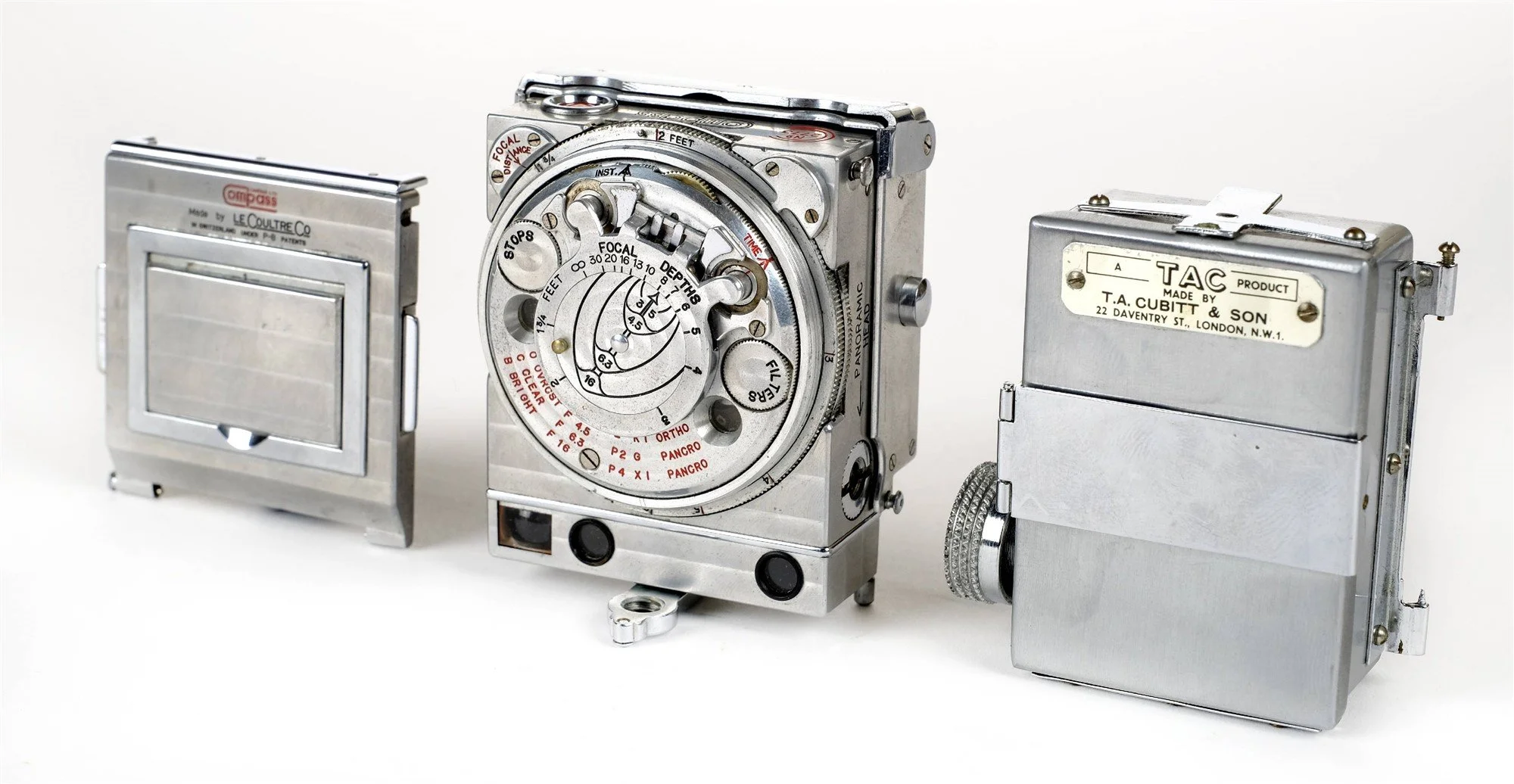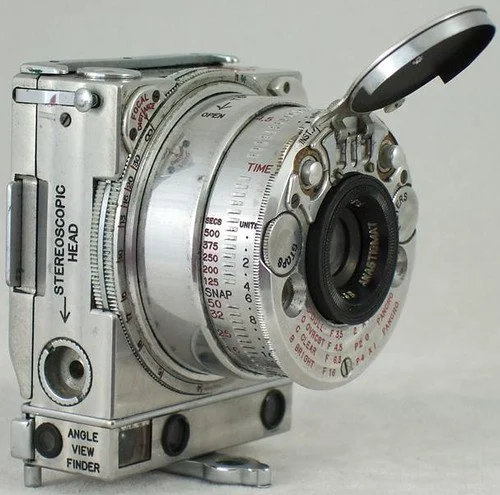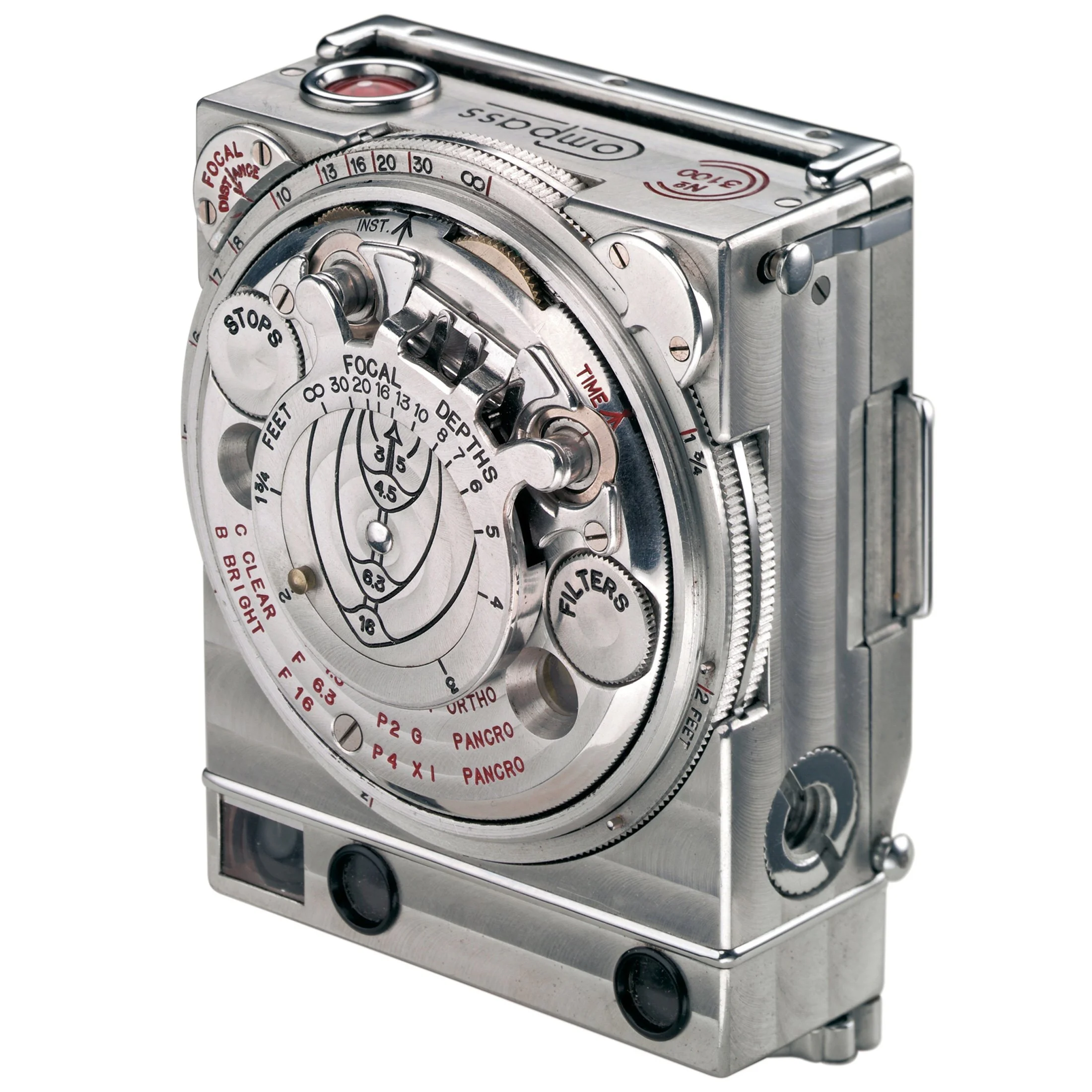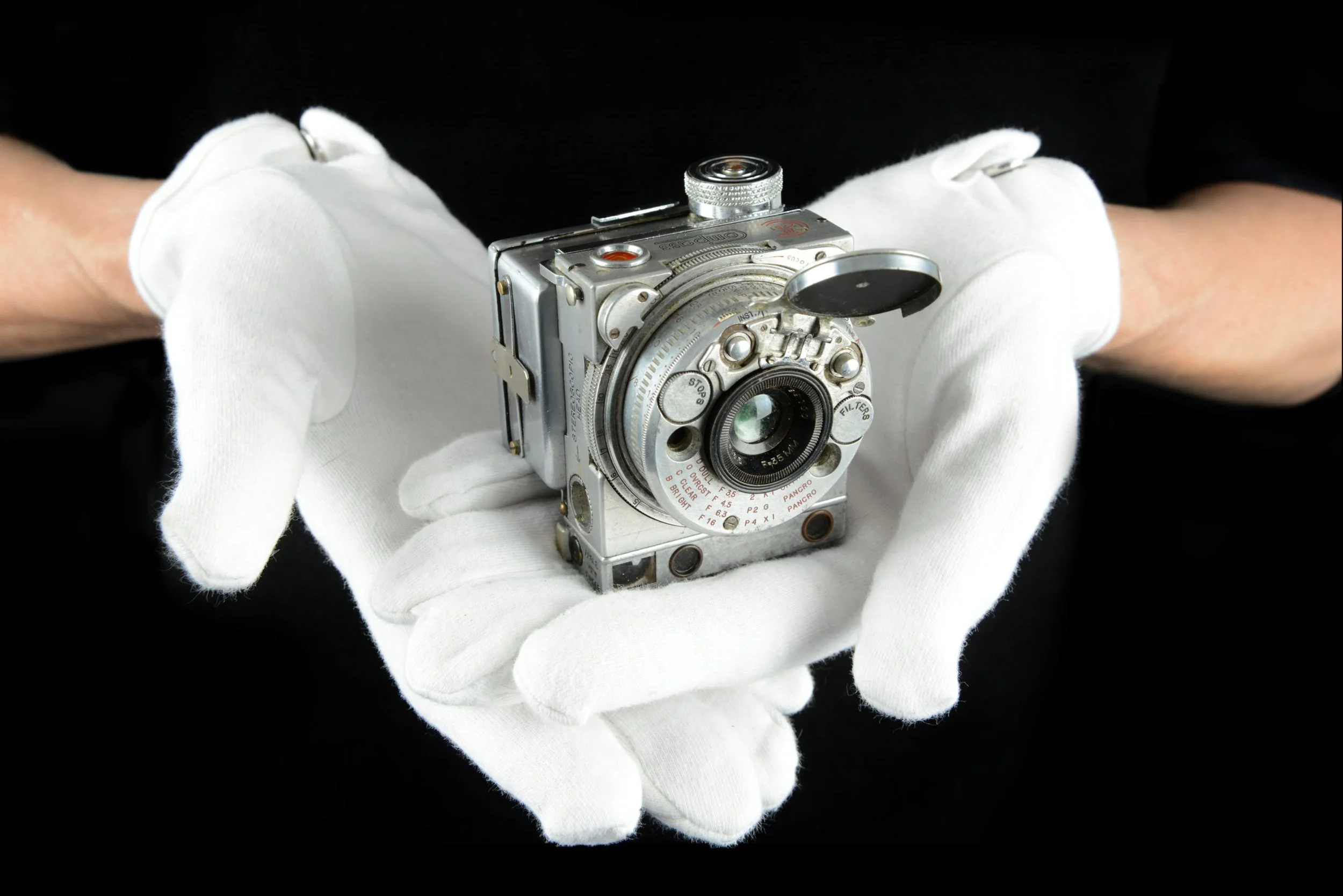The Jaeger-LeCoultre Compass Camera
This camera is so beautiful- I LOVE it.
From the 1930s there was only ever 4,000 made. Production was stopped because of world war two, and never resumed.
A great shame.
At the time of production it was one of the most technically advanced cameras anyone had ever made. Machined out of aluminum, it's a 35mm film camera, with rangefinder, ground glass viewfinder, exposure meter, and more, all in a package just 2 3/4 inches x 2 1/4 inches x 1 1/4 inches.
The inventor of this device, Noel Pemberton Billing, was many things in life: a disobedient runaway child, an odd job worker in his youth, a boxer, a soldier in the army (where he was injured in the second Boer War), an aviation enthusiast, a politician- eventually becoming a member of parliament.
There was apparently a bet stating it wasn’t possible to make a camera that fit inside a cigarette packet, to which Billing began work on a miniature, collapsible camera that would accept 35mm film.
His design required a company with expertise in miniaturization of gear trains, and instead of working with a conventional camera manufacturer, he set up his own company in London – Compass Camera Ltd. – and contracted with LeCoultre & Cie to assist with engineering and manufacturing.
The first version used individual sheets of 35mm film, while the second version allowed the use of a roll film magazine that added very little bulk to the camera (you could actually swap out backs and the roll film magazine was offered as a free upgrade to Mark I owners).
The procedure for using the camera was somewhat complicated,.
You would begin by opening the telescoping lens, and loading a sheet of 35mm film into the back. Closing the back would leave one edge of the light-tight paper film envelope protruding, and you would pull this out, which would leave the film ready for exposure.
I find this camera to be a stunning piece of technology.
I absolutely adore things made with expert craftsmanship and painstaking details. While not something I yet incorporate into my work, it is something I aim to achieve as I grow in my career as an artist and maker.
Furthermore, I find the compact design to be adorable, the circular motif creates such a cute and bubble-wrap like look, it invites me in. I imagine it feels very fun to hold in the hand as well, while maybe being slightly anxiety inducing for a modern user, back when they were made and not viewed as so precious- I believe the small tactile nature of this camera would have been enjoyable and a fun selling point.
Or maybe I just love tiny things…
The choice to make this exterior shell so predominantly from aluminium is also beautiful in my opinion. I think nowadays metal is used to signify quality and strength, so that might influence my opinion, but I think it’s the uniformity I find pleasing. If it were entirely made of wood I would find it beautiful. Using the kind of matte plastic and rubber found on modern day DSLR cameras would be ugly, however if a shiny plastic were to be used (correctly) that option could also be nice.
I love the shine and impact of this metal camera.
I will unfortunately never get to handle such a camera, I have no reason to be invited to a museum or private collection, and even though I would love to- I doubt I will ever become rich enough to buy one.
So for now I will simply admire, and hope that society and designers return to this gorgeous maximalist style that I adore so much.






